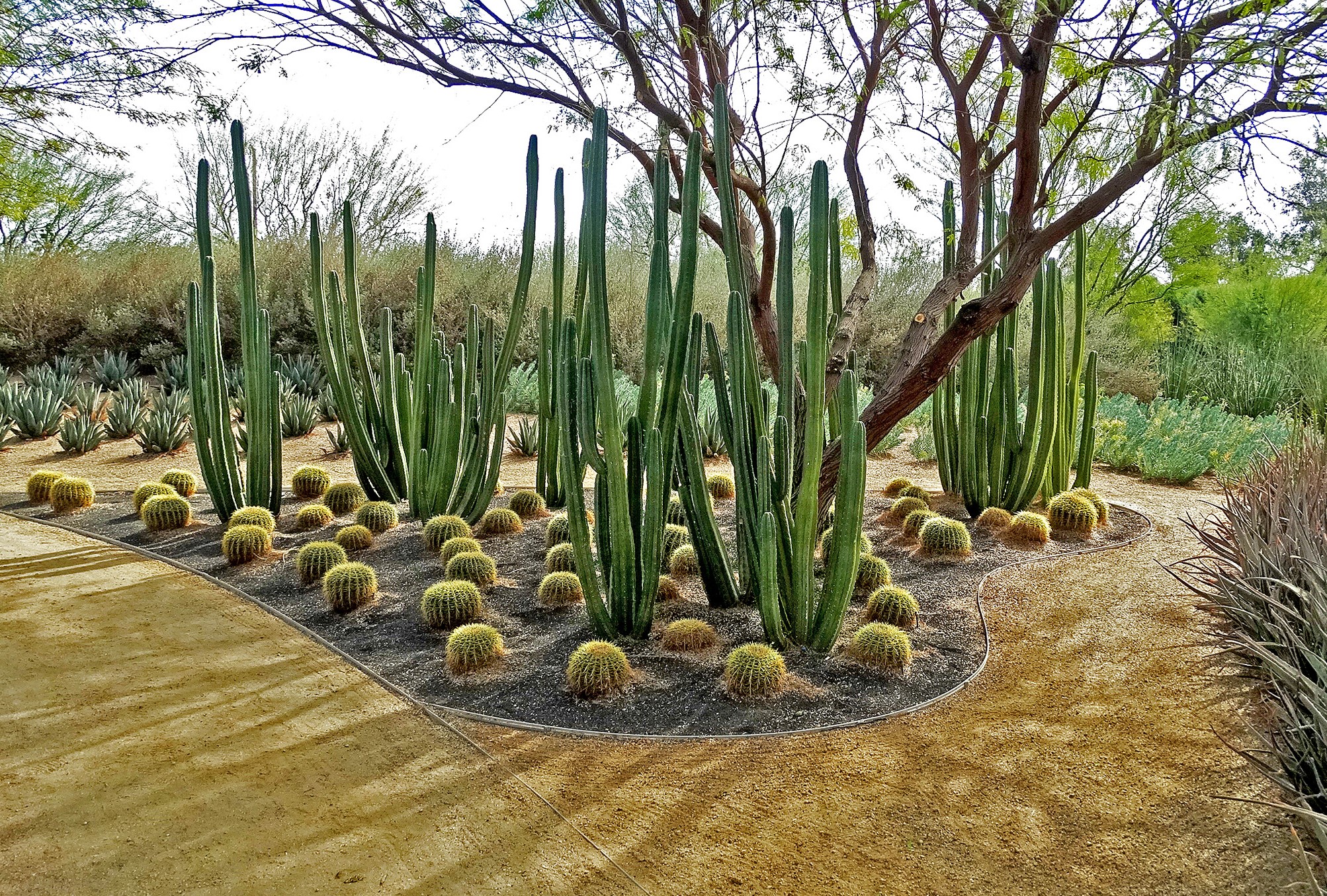
Xeriscaping. The future of landscaping in the face of climate change
Rodrigo Escamilla and Juan Pablo González talk to us about Xeriscaping: The future of landscaping in the face of climate change.
After the prolonged drought in California in the late 1970s, the concept of Xeriscape was coined in the United States around 1981, which led to the development of what is now known as Xeriscaping.
The name of this trend that is on the rise comes from the word “xerós” in Greek which translates to “dry” and it refers to gardening in a dry climate, using efficient irrigation systems, native species adapted to all xerophytic conditions and resistant to water stress in order to achieve sustainable spaces. (Santiago Beruete).
The gardening of our times must respond in favor of recovering the balance of our environment in local and global terms. Xeric gardens can considerably reduce water consumption compared to traditional ones.
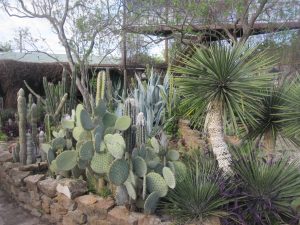
Xeriscaping.
Photography: Billy Hathorn, CCBY-SA3.0, via Wikimedia Commons
The main characteristic of xerophytic plants is that they are plants that have evolved thanks to the modification of their leaves, stems and roots, which is why they are capable of absorbing and retaining water for long periods of time to survive extreme climates and excess of sunlight.
They have a thick epidermis and leaves formed by a large number of stomata to favor the process of photosynthesis due to the lack of rain, some have very small leaves with few pores in general, but there are also some that have thorns or deep roots, others with hair and leaf wax, and finally, those with rolled and toothed leaves.
Designing green areas with vegetation that can withstand prolonged periods with minimum water does not mean that it aesthetically opposes the exotic and ornamental. While the range of vegetation is very broad, it is advisable to include native plants due to their adaptation to the climatic conditions of the region.
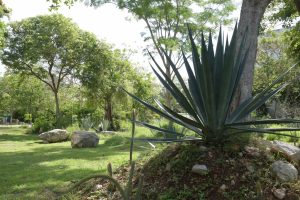
Agave Sisalana.
Photography: Rodrigo Escamilla
In my case, I have been able to identify a good adaptability of plants such as: White Maguey (Agave americana), Yellow Maguey (Agave americana var. marginata), Henquén (Agave fourcroydes), and Chelem (Agave angustifolia var. angustifolia). Among the most commonly used cacti are: Organ Cactus (Pachycereus marginatus), a South American cactus called Cardón (Cereus hexagonus), globular Cactus such as Mamilarias. Likewise, Opuntias and Nopaleas stand out, including Opuntia ficus-indica, which is used to make the famous nopalitos.
Among the Euphorbiaceae family, there is the famous Asian Milkman (Euphorbia lactea). Among the crassulaceae we can highlight the Echeverias and the Sedum which are usually displayed in planters and are recommended by the architect Rodrigo Escamilla, director of Jardines Nativos Mexicanos (JNMX).
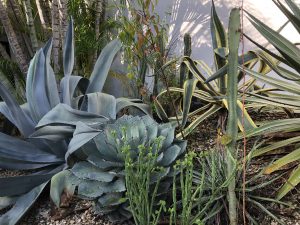
Textures and colors are essential in xeriscaping.
Photography: Rodrigo Escamilla
The Agavaceas, Cactaceae, Crassulaceae and Euphorbiaceas plants are not the only ones that we can use to make a Xerophilic garden. However, we can also integrate plants with palmiform, arboreal and shrub forms, to mention a few, we could say: Madagascar Palm (Pachypodium lamerei), Izote or Yucca (Yucca sp.), Desert Flower (Adenium obesum), May Flower (Plumeria obtusa) and Peacock flower (Caesalpinia pulcherrima) a small tree that flowers all year round and is very resistant.
Therefore, xerophytic gardens are an excellent option to compensate for the poor use of water that human beings have been making in the field of gardening during the last decades. We must remain receptive to finding solutions in an integral way and evolve towards more sustainable gardens that help to recover the balance of the environment, in addition to making creative and unique designs as promoted by xeriscape.
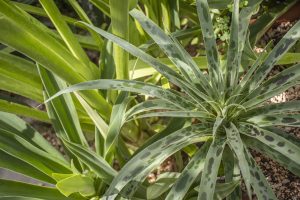
Manfreda petskinil.
Photography: Rodrigo Escamilla











